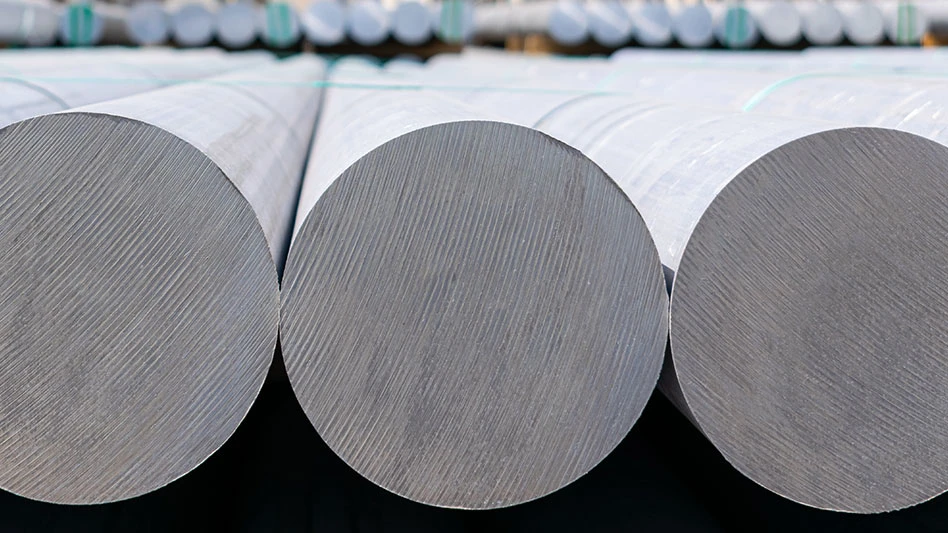
CoinUp | stock.adobe.com
According to preliminary estimates from the Aluminum Association, Arlington, Virginia, aluminum demand in North America, which comprises the U.S. and Canada, increased 5.2 percent year over year through the first half of 2024. This follows a year of softer demand in 2023 primarily driven by industry destocking and an approximate 25 percent decline in imports.
The demand data was part of the Aluminum Situation report produced monthly by the Aluminum Association.
“Customers and end consumers have made it clear that they want sustainable, recyclable materials like aluminum," Aluminum Association President and CEO Charles Johnson says. "Our members are investing in production and jobs in the United States to help meet this demand both now and in the future.”
The report found that aluminum demand in the United States and Canada (shipments by domestic producers plus imports) totaled an estimated 14,056 million pounds through the first half of 2024, an increase of 5.2 percent compared with the first half of 2023, when demand was 13,365 million pounds.
Semifabricated, or mill, product demand remained largely steady year over year through Q2, according to the report, while sheet and plate demand rose 7.5 percent and foil, extruded products and electrical markets declined.
Aluminum exports (excluding scrap) increased by 25.6 percent year to date, and imported aluminum and aluminum products into the North America decreased 14 percent over that same period.
At 105.97, the association’s Index of Net New Orders of Aluminum Mill Products (baseline index of 100) increased 1.1 percent through June.
In the last decade, Aluminum Association member companies have announced more than $10 billion in domestic manufacturing operations, including new, U.S.-based greenfield facilities for the first time since the 1980s. Aluminum production in the U.S. is growing thanks to increased demand for sustainable packaging, safe and efficient vehicles, greener buildings and vital infrastructure, the association says.
Scrap generation appears to have slowed as aluminum demand has increased, however, with one secondary producer saying the market is softer than it was a year ago, while another says export markets also have slowed.
“It's not as is not as robust,” says Michael Boyle, president of Owl’s Head Alloys, headquartered in Bowling Green, Kentucky, in September. “On the scrap supply side, everyone's chasing the same pounds right now."
Scrap flows generally pick up in May, Boyle says, “and we just didn't see that big flow pick up like we usually do on a seasonal basis. People are fighting over the same metal units at this point, and something has to change.”
In his commentary in the “Bureau of International Recycling World Mirror on Non-Ferrous Metals” for October, Rick Dobkin of Shapiro Metals, St. Louis, writes: “As for recycling, we are starting to see some of the greenfield aluminum expansions entering the marketplace and causing sporadic shortages of certain items. Rolling mill scrap was very tight recently but now seems to be a little better balanced. Extrusion scrap is hit or miss. Whereas that part of the business had been expected to return to growth in the second half of this year, people are now saying any improvements are likely to come in mid-2025. On the secondary aluminum side, export markets have been faltering of late amid reduced pricing and demand. Demand seems reasonable and stable domestically.
“We are now entering the period of contract negotiations for 2025, with the mills concerned about availability of scrap given increased demand from the new operators. There have been some recent calls to prohibit the export of scrap metals, but these have not gained much traction as yet.”
Latest from Recycling Today
- BMW Group, Encory launch 'direct recycling’ of batteries
- Loom Carbon, RTI International partner to scale textile recycling technology
- Goodwill Industries of West Michigan, American Glass Mosaics partner to divert glass from landfill
- CARI forms federal advocacy partnership
- Monthly packaging papers shipments down in November
- STEEL Act aims to enhance trade enforcement to prevent dumping of steel in the US
- San Francisco schools introduce compostable lunch trays
- Aduro graduates from Shell GameChanger program





